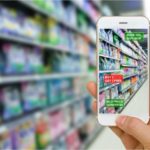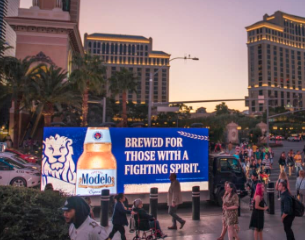If you’ve been following along, you’ve already seen how the food and beverage industry thrives through both online and offline marketing channels. Our deep dive into online marketing for food and beverage brands explored channels like e-commerce platforms, social media, and email marketing to reach customers in the digital space. Meanwhile, our guide to offline marketing channels brought us back to the power of in-person connections through in-store demos, direct mail, and other hands-on experiences.
But what happens when you blend the two worlds? That’s where hybrid marketing channels come in—merging the best of digital and traditional strategies to create a seamless, omnichannel experience. By combining physical and digital interactions—like augmented reality on billboards or interactive QR codes on packaging—these channels create immersive, interactive touchpoints that engage customers wherever they are. Let’s explore how these hybrid strategies are changing the game for food and beverage brands, creating new ways to connect with customers and redefine the future of marketing.
1. Mobile Billboards Enhanced with Digital Features
Mobile billboards—ads you see on trucks, buses, and other vehicles—have always been a go-to for getting noticed on the move. But with digital upgrades, they’re taking engagement to a whole new level. Today, a billboard on a delivery truck not only advertises but actually interacts with its surroundings. Brands can now equip these mobile ads with digital screens and location-based AR, creating unique, on-the-go experiences.
For instance, a truck passing through a busy downtown might display a customized message like, “Hungry? Find us at the corner!” Some mobile billboards even adapt in real-time based on data—switching messages depending on the time of day, location, or even weather conditions. These new features let brands respond dynamically to the environment, making ads feel more relevant and engaging.
It’s a fresh twist on a classic marketing channel that keeps up with today’s interactive, fast-paced world.
Mobile billboards get your message moving, but what if you could make your ad not only mobile but interactive? Enter augmented reality, where traditional outdoor ads transform into dynamic experiences that captivate and engage on a whole new level.
2. Augmented Reality (AR) and Interactive Outdoor Advertising
Augmented reality (AR) reshapes traditional outdoor advertising, transforming static ads like billboards and transit signs into engaging, digital experiences. Using technologies like QR codes and AR overlays, brands can enhance physical ads by letting passersby unlock virtual content on their devices—whether it’s a 3D animation, interactive product demo, or a digital game.
Brands in the food and beverage industry are taking creativity to the next level by using augmented reality (AR) to captivate and engage their customers like never before. These innovative AR campaigns blend physical products with digital experiences, turning everyday encounters into interactive adventures. From immersive recipe books to festive virtual experiences, these AR campaigns show how blending real and digital worlds can make marketing more dynamic and engaging.
- Interactive Beverage Packaging – When customers scan a QR code on the label, they can see details about the wine’s origin, flavor profiles, and suggested food pairings. This approach provides an educational and immersive experience, helping customers feel more connected to the product while encouraging repeat purchases. Brands like Jackson Family Wines and others are using WebAR (web-based augmented reality) to make packaging interactive.

- Recipe and Ingredient Insights – Some food brands are incorporating AR to reveal ingredient origins and recipes. For instance, consumers scanning a product package could access a video that details the source of ingredients or showcases recipe ideas using the product, as seen with various brands in the food and beverage sector. This transparency builds trust and connects consumers to the brand on a deeper level.
- Augmented Product Demonstrations at Events – At pop-up events or tastings, brands use AR to bring static displays to life. For example, a product’s AR activation could show a cooking tutorial or demonstrate different ways to use the product through an interactive animation.
- Virtual Rewards and Discounts – AR technology is used to make promotions more engaging. Customers might scan an ad or a product package to unlock special offers or discounts via virtual games or scavenger hunts. This approach gamifies the customer journey, making brand interactions more memorable and rewarding, and has been especially effective for in-store promotions and product launches
Augmented reality brings your brand to life in outdoor spaces, but location-based marketing takes it one step further, delivering personalized messages and offers precisely when customers are nearby, adding an extra layer of relevance.
3. Location-Based Marketing
Location-based marketing taps into geolocation data to reach customers at just the right moment, making your brand feel timely and relevant. For instance, as customers pass by a coffee shop, they might receive a notification offering a discount on their favorite latte or a free pastry with purchase. This type of real-time personalization—based on where customers are—adds a layer of convenience and connection that makes shopping feel tailored.

The impact grows even further when brands combine location-based offers with in-person events like pop-up shops or seasonal sales. For example, a customer might spot your mobile billboard during their commute, receive a store discount notification when nearby, and step right into a one-day event.
These connected, location-driven moments transform routine outings into meaningful interactions with your brand, increasing foot traffic, building loyalty, and creating an experience that blends convenience with engagement.
Once customers are engaged in-store, why stop there? Gamified advertising turns engagement into fun challenges and rewards, inviting customers to participate actively and make the experience more memorable across platforms.
4. Digital-Enhanced In-Store Experiences
Stores are increasingly integrating digital elements into the physical shopping experience. Think smart shelves, touchscreens, and digital kiosks that provide more information about products or let customers order online if the store is out of stock. By creating this blend of digital and physical, brands can meet modern customers’ expectations for convenience and immediacy.

After reaching customers through location-based messaging, the journey continues as they step inside. Digital-enhanced in-store experiences bridge the gap, seamlessly connecting their digital interactions with the physical store environment.
5. Gamified Advertising
In the food industry, brands increasingly use gamification to create ads that go beyond the ordinary and spark active customer participation. Gamified advertising integrates game-like elements—like rewards, points, and challenges—into campaigns, making ads both fun and engaging. This approach transforms traditional advertising, encouraging people to interact with ads rather than simply glance at them.
A great example is Jack in the Box’s collaboration with Spotify. Through gamified audio ads, listeners participated in trivia about the menu, with rewards like discounts for correct answers. By turning the ad into a mini-game, Jack in the Box made the experience engaging, rewarding, and memorable for customers. This is a great example of using gamification to turn passive ad consumption into active participation, enhancing engagement and brand interaction.
From virtual scavenger hunts on digital billboards to interactive displays in-store, gamified advertising in the food industry brings brand experiences to life, helping brands build loyalty and stand out in a crowded market.
These hybrid channels are redefining how food and beverage brands can create deeper connections and a more unified customer experience, positioning themselves at the cutting edge of marketing innovation.
Final Thoughts: How food businesses can thrive with a mix of digital and offline channels
As the food and beverage industry grows more competitive, an omnichannel marketing strategy is essential for standing out, connecting with customers, and expanding your audience. Today, brands can’t rely solely on digital or traditional tactics alone; instead, it’s about crafting an interconnected journey that reaches customers wherever they are—whether they’re browsing online, interacting with an outdoor ad, or visiting your physical store.
To build an effective omnichannel strategy, start by understanding your customer’s journey. How do they move from one channel to another? Use this insight to design campaigns that flow seamlessly from one experience to the next. Capture attention through mobile billboards or augmented reality ads, then guide customers to your store with location-based marketing, where in-store digital experiences and gamified elements keep them engaged. This approach not only deepens engagement with current customers but also reaches new customers by strategically placing your brand across multiple channels.
Beyond the channels themselves, consistency is key. From digital ads to in-store displays, your brand voice, visuals, and messaging should align across touchpoints. Omnichannel isn’t just about using multiple platforms—it’s about creating a cohesive experience where each interaction builds on the last, fostering trust and making your brand an easy choice for customers.
Finally, remember to measure your results. Track customer engagement across each channel to see where you’re successfully reaching new audiences, and refine your approach based on real data. An omnichannel strategy isn’t static; it’s a dynamic journey that evolves with your customers’ changing preferences and behaviors.
By integrating digital innovation with traditional marketing and creating a connected experience, your brand can effectively find new customers, expand its reach, and keep audiences engaged and loyal.


